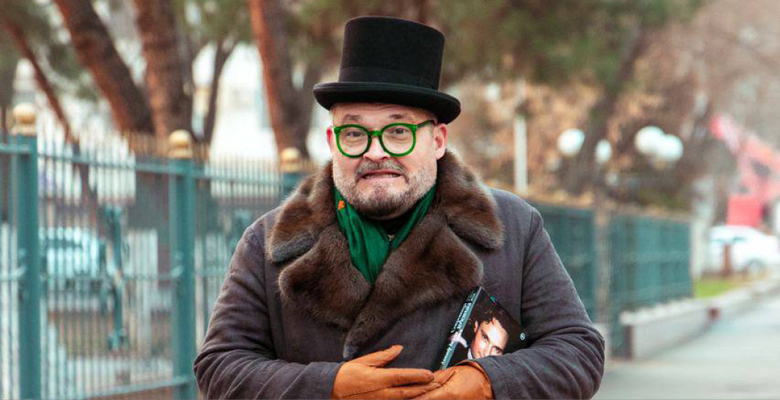
On 26 February, the well-known historian of fashion and art Alexander Vasilyev is coming to Britain. In a private and exclusive London club, he will give a lecture entitled Beauty in Exile. On the eve of his visit, Alexander gave an exclusive interview to Kommersant UK in which he discussed Britain’s historic contribution to world fashion, the icons and attributes of British style, the wardrobe errors of Russian-speaking emigrants and the fashion trends of recent years.
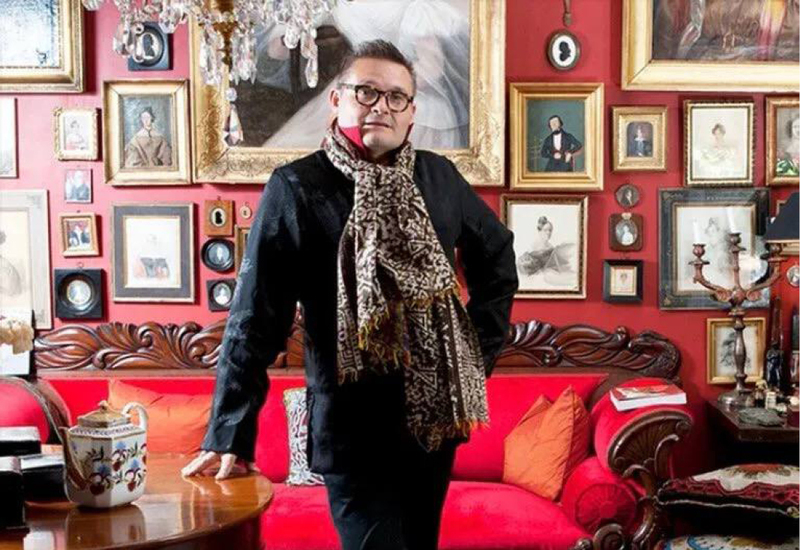
Which British fashion house has made the greatest contribution to fashion history and why?
Global high fashion began with the English; in 1857 Charles Frederick Worth, (born in Lincolnshire) opened a fashion house in Paris catering to high society, including Empress Eugénie. Worth made the greatest contribution to the fashion industry. In the 20th century, many talented British designers appeared. One of the most colourful of these was Mary Quant, who revolutionised fashion in the 1960s by creating the miniskirt. In the 1970s Bárbara Hulanicki burst onto the fashion scene, founding the Bibi fashion house, which created high-quality clothes and accessories at affordable prices (the first fashion breakthrough was a sleeveless chequered dress). Their dresses were originally intended to appeal to young women, but, over time, their list of clients grew to include many famous persons such as Brigitte Bardot, Mia Farrow, Mick Jagger and David Bowie. The British journalist and head editor of the American edition of Vogue magazine, Anna Wintour began her career in fashion as a sales assistant at Bibi. Vivien Westwood is a lady who made a tremendous breakthrough in British fashion in the 1980s. In the 1990s, Alexander McQueen and John Galliano made similar breakthroughs. Although Galliano sank into obscurity for quite some time, he has recently come to the fore once more as a true genius of British fashion; the presentation of his 2024 spring collection for the Maison Margiela fashion house was a triumph.
How can we dress in a British style on a shoestring?
In Britain, many love the retro style. The English are quite thrifty and can wear the same outfit for half a year. This goes for tweed, velvet, Scottish tartan and all those variations of striped fabrics which, by association, exemplify for us the British style. Accordingly, in my view, the most economical way to dress in a British style is to head for a charity shop. There, you can find tweed, chequered patterns, stripes, wool and knitted Shetland jumpers. However strange it may appear, despite many movements in the fashion world having British connections, such as hippies, punks and even retro, overall, the English have conservative tastes and on the whole, the man on the street doesn’t dress as flamboyantly as the catwalk models of the aforementioned fashion houses. In Britain, It’s not fashionable to stand out and I believe this can be explained by the fact that the country remains a monarchy and as such, people feel compelled to follow tradition; monarchy always involves the preservation of traditions. This is expressed in how people select their wardrobes.
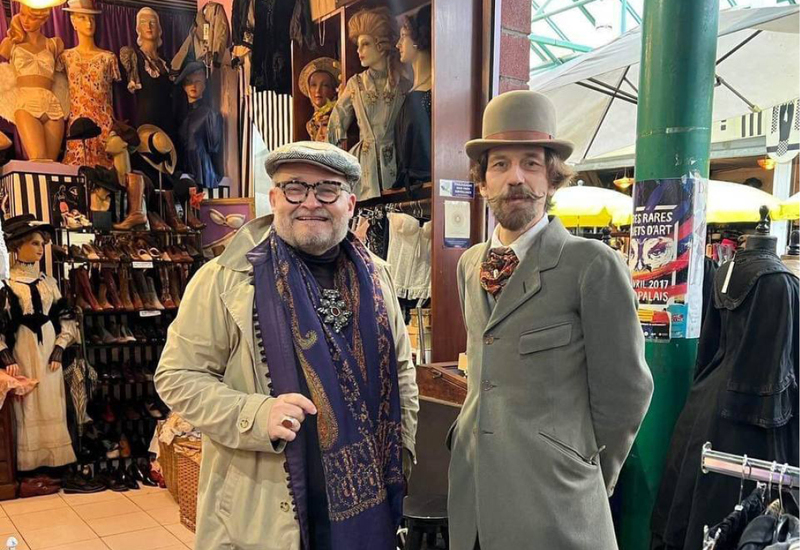
Do you often buy things which have already been used? What marketplaces, shops and flea markets in London are your favourites?
I view second-hand garments favourably; the planet is already so despoiled that it’s pointless to litter it further with an excess of new things. In fact, I’m an advocate of people treating their clothes carefully and of remaining true to their old things, especially if they have found their own style. Of course, many items in the wardrobe do need to be refreshed from time to time; the replacement of shoes, gloves, sweaters and pullovers, both knitted and woollen, is unavoidable, but tweed jackets and suits are built to last so they can forever remain in your wardrobe. For many years, I used to buy antique, vintage articles for my collection on eBay. Now I acquire them at auction at Chrisities, Sotheby's and Kerry Taylor. But these days, I virtually never buy clothes for myself as I have an enormous amount. I love to travel, and when travelling to Morocco or India, (I’ve also been to Persia and the Emirates), I like to buy men’s things with handmade touches which have stories behind them. I often wear Moroccan caftans, handmade Cashmere shawls and jewellery. They are also second-hand. Recently, I went to Georgia and I walked around the Dry Bridge Flea Market, where a large selection of antique silver ornaments is on display. On the whole, I’m a fan of big flea markets. In London, I’m always going to Portobello Road.
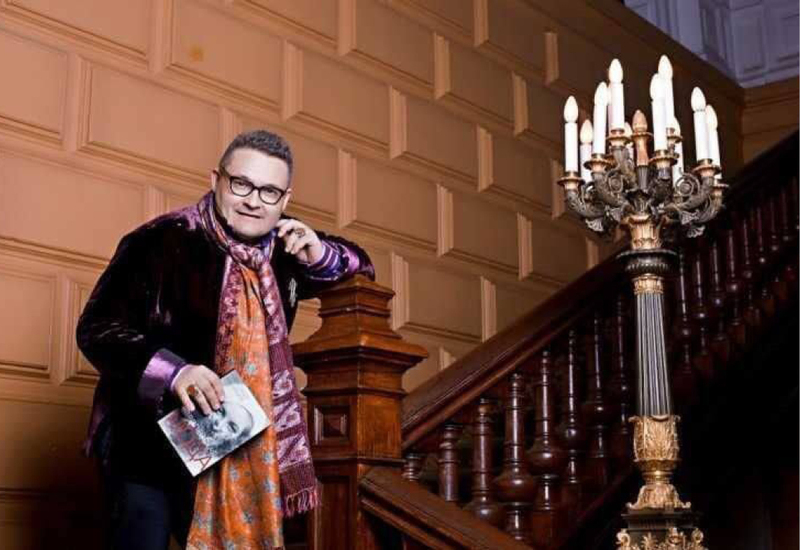
What fashion trends have appeared in the world in recent years?
There have been an enormous number of them, but if we consider the 2020s, then, of course, the pandemic and war have brought the most significant changes to fashion. The first trend is that oversized clothes have come into vogue. During the pandemic, many people put on weight as they ate a lot and led a sedentary lifestyle, so items from their usual wardrobe became too small for them, resulting in a demand for supersized articles. The second trend is a military style which is very clearly reflected in fashion by khaki tones, camouflage colour schemes and military touches such as patch pockets, epaulettes, belts and chunky-soled boots. But the most powerful trend which has established itself in the 21st century is the sports style, thanks to which many articles of sportswear have come into fashion; joggers, hoodies, t-shirts, and shorts, which are now worn in winter when previously this was unthinkable. The main reason for the popularity of this trend is a change to the shoe stock. While before 2000, shoes made of natural leather and suede were considered a sign of stylishness and most people tried to buy them, after 2000 trainers completely squeezed out all high-heeled and leather-soled shoes. Today, 70% of the world's population has gone over to trainers. Despite the cost of their production being fairly low, trainers from major brands such as Balenciaga, Nike or Adidas can be very expensive, not to mention Christian Dior or Chanel. To the regret of aesthetes, myself included, trainers have become a staple of daily attire and this trend has spoilt people’s feet. These organs are prone to deformities, such as those suffered by ballet dancers, runners and lovers of pointy court shoes. Now people just can’t get into dress shoes as their feet have become too wide. I think humanity has settled all its scores with footwear, which is why I enjoy acquiring Cuban heels and platform shows for my collection.
Do you wear trainers?
I have one pair which I was given while I was working on Fashion Verdict [In this popular show, hosted by Vasilyev from 2009 to 2022, judges rated contestants' fashion sense]. It was to mark an anniversary on the programme five years ago. They are very beautiful and decorative and when I had to appear on certain programmes, I used to put them on solely to flaunt them, as they were fashionable and showed off my legs. But generally, trainers don’t feature in my wardrobe and I hope that I never will acquire the habit of wearing them. But I’m not a typical example of the zeitgeist, I don’t live like everyone else, I don’t listen to the same music and I don't read the same books. So I never call on people to imitate me, I like my eccentricity.
At what point did premium brands start selling trainers?
Since some time in the 2000s. They have become so ubiquitous that even famous brands which were once known for their elegance, such as Yves Saint Laurent, Christian Dior, Givenchy and Chanel were required to take this measure. I was recently at the Dior Museum in Paris, and I looked at the exhibits. Of course, I wouldn’t venture to criticise such a great fashion house but what I saw was red sweaters with enormous holes, ripped trousers and trainers. The sweater cost about €800 (£685), the trousers were roughly €1,000 (£855) and the trainers were €600 (£515), so it wasn’t a budget look, but the effect was atrocious. People used to naively think that if they spent a lot, they would look good. Today’s fashion has moved away from this criterion. You can acquire expensive things and still look bad, not to mention poor. The main reason for this change is the disappearance of safety from the lives of European cities. These great changes to the collective wardrobe have occurred due to wars, mass migration and the appearance of refugees on the streets of Europe. Often people who are unacquainted with fashion think that it should decorate the person, but today’s fashion is a way to send a social message. Additionally, in the 21st century, the role of gender has changed; in many cases, women have become the main heads of families and begun to dress accordingly, so men’s suits, consisting of a jacket, trousers, a shirt and tie, have become their formal attire. Previously these were exclusively male garments. Of course, men aren’t shifting to skirts and dresses (even women don’t wear them as they are inconvenient), however, it is certain that items of male attire will dominate on the catwalks of the 2030s. But I’d like to give everyone cause for hope, (or pessimism, depending on their view); every decade fashion changes and something completely different comes along which is radically different to what there is now. Possibly ruffles and floral patterns will make a comeback and the plumped-lipped, scrubbingbrush-eyelashed warrior woman aesthetic will become a thing of the past.
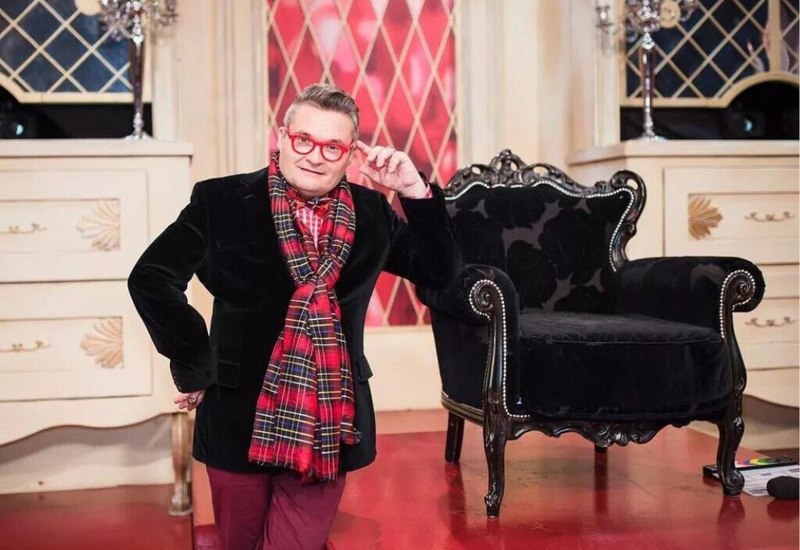
What are this year’s essential wardrobe additions for fashionistas?
I’m not expecting any great changes, as today everyone loves a basic wardrobe, yet this simplicity implies banality. The basic colours, black, navy blue, white, brown and grey, are mundane urban colours which help us to withstand whatever modern life throws at us. This is why I recommend all fashionistas acquire comfortable monotone figure-correcting base clothes to create a protective capsule for daily life. This needs to be complemented with a coloured element such as a bright scarf or neckerchief, a bag, gloves, or glasses. Ornamentation and images should only be present on accessories. At the same time, it is vital that the base wardrobe is chosen very carefully so that it conceals and corrects any imperfections of the figure. This skill can be learned, I give courses for women on how to select clothes. Choosing garments incorrectly can give rise to all manner of problems; it can affect everything from career growth, as poorly-dressed people make worse progress on the career ladder, to personal happiness and family relations. It’s crucial for housewives to pay attention to how they dress, especially at home, where they must avoid walking around in old dressing gowns. They should look presentable so that husbands are proud of them. Clothing also affects relationships with younger people, as often it is parents’ and grandparents’ old-fashioned choice of clothing which children and grandchildren find embarrassing. The final problem is related to wider society as clothes are always a calling card of good taste, well-being and intellect, so how people are received by society often depends on how they dress. Sometimes people observe that they are no longer invited out, received as guests or noticed at the theatre or concerts. This change could be due to their attire. Giorgio Armani said that elegance reflects a lady’s intellect. An unintelligent lady can never be elegant. Only a clever woman can, as she understands what she loses by dressing awkwardly.
Who do you consider the most stylish woman in British history, and which modern British woman deserves this title?
Britain didn’t just give the world many stylish people, but for a long period, it led the world in various areas of style. Of course, in England, the royal court always stood out and set the yardstick for elegance and flair. To the end of her days, Elizabeth II maintained very high standards for elegance. Princess Diana was one of the most elegant and stylish women of her time. Now Queen Camilla enjoys great affection. She has transformed herself appropriately, she wears neckwear such as foulards that complement her figure and conceal flaws. Catherine, the Princess of Wales dresses with good taste and refinement. There are many actresses, TV presenters and singers who always draw attention to themselves. Britain has one peculiarity; it’s an island and island syndrome is widespread here. Not all English people want those abroad to know everything about them, which is why they like a degree of remoteness and reserve. I think that this is why they left the EU; they didn’t like communal living. I find much that is exclusive in Britain. Besides this, women don’t have a monopoly on elegance here, there are many elegant men, including actors and successful businessmen. Many novelties in men’s fashion were introduced by successive Princes of Wales, such as trouser creases and turn-ups, tweed jackets, waistcoats and kepis. In fact, the entire male wardrobe of the 20th century is an English invention. The Italians, for instance, who burst onto the world of men’s fashion at the end of the 20th century, were simply copying English outfits and bestowing on them a touch of glamour that the English, traditionally averse to such extravagance, often lack. In Italy, by contrast, glamour plays an enormous role and the Italians know how to impart it with a sexual subtext, while sexuality plays no role at all In English clothing. Amongst other things, the protestant religion has had a hand in this, as has strict upbringings. Single-sex schools for boys and girls still exist in Britain.

What do you think of the King’s wardrobe? Can Charles III teach us anything about style?
I like the fact that Charles hasn’t changed his approach to clothes and hasn’t started to dress differently since he became king. I’m glad that he finally got his crown, and that he married again, because, despite public feelings toward Camilla always being quite perfunctory, she has become both his pillar of strength and his devoted wife. They both leave a strong impression on me.
What main wardrobe errors do Russian-speaking emigrants make on coming to the West? How can we learn good taste?
Good taste is like perfect pitch; either you have it from birth, or you don’t. But while it’s difficult to learn good taste, it can be developed with the help of music, fine art and travel. Style can be learnt; you can become accustomed to it with the aid of a stylist, or a specific look can be learnt while travelling. The principal mistake of the Russophone emigrant is a cacophony of colours; the desire to cover everything in bright tones to show your vibrancy and colourfulness. Quite often they express their emotions rather loudly and wear excessively bright make-up. At the same time, everyone is different and I can’t say that there is a common denominator defining all types of Russians abroad. Back in the 20th century, they could be spotted a mile off, but there’s been a huge breakthrough in the 21st century; many have learnt English and speak it without an accent. Also, they’ve begun to dress decently and stylishly. I believe that as well as the experience gained while travelling, fashion magazines and informative programmes, including Fashion Verdict, have contributed to this progress. Not long ago, Russians were the most active tourists, they travelled a lot, saw things, found things out, and made, in my view, the right decisions, so overall, these days I don’t feel ashamed. Russian women won’t come along and look awful. My judgement is based on my lectures on the history of fashion which large Russian-speaking audiences come to see; around 400-500 people. On these occasions, I see elegant and well-dressed ladies, especially in the first rows. Of course, there are also comic characters, dressed in a slightly caricature-like fashion, but overall the picture is quite favourable.
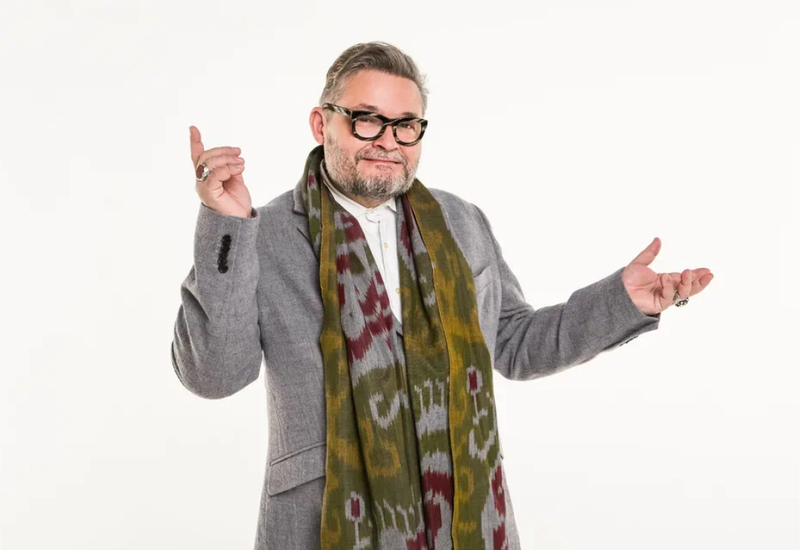
Will artificial intelligence change how we dress?
I believe so. What’s more, I suppose that professions such as stylists and fashion designers will die out. AI will decide everything for us. This, of course, will produce new results; maybe fashion will be more feminine by 2030.






